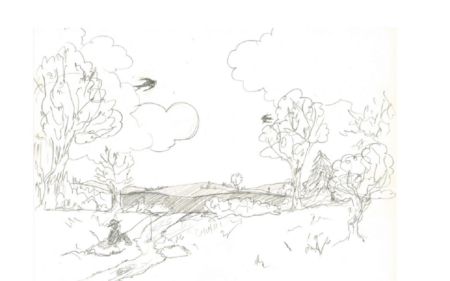Community values in accessible urban green spaces and planning: An Oxford case.Case study
Investigating community values in accessible urban green spaces and assessing the equity of urban green governance across different socio-economic areas of Oxford.
Connections between inequality of income and green space accessibility (1), and between green spaces and the benefits they realise for human well-being and the natural environment (2), especially to the most social-economically deprived tiers of society and their lived areas (3) have been investigated and established.
This project takes an intra- and inter-community comparative approach across three urban areas of Oxford characterised by different indexes of multiple deprivation (IMD), with the most deprived one identified as priority neighbourhood by the active programme in the Leverhulme Centre for Nature Recovery on ‘Equitable distribution of nature-rich accessible green space: An Oxfordshire case study‘ led by Martha Crockatt.
By employing a mix method approach, the study investigates community values in urban green spaces through walked interviews (Walk&Talk) in parks and green spaces participants use the most in their own lived area and considers the imaginary of the ideal green space residents have in mind when engaging in such conversations. Residents’ imaginaries are captured through a sketch-based method supported by the artist Harmanpreet Randhawa. Eventually, it considers the equity of local urban green governance in Oxford in the forms of Neighbourhood Plans or Re-generation plans.
Not only it is important that communities are consulted and engaged in planning of urban green spaces to facilitate a re-localisation of these and the development of a sense of stewardship. Community engagement should be done in a way that celebrates the plurality of values and preferences of the bio-culturally diverse society in Oxford. The project design and community engagement strategies employed have been developed in a place-based approach with the support of a network of local NGOs, community and resident associations, and local representatives.
1. Lovell et al., 2020; Smith, Hafferty and Seddon, 2023; Twohig-Bennett and Jones 2018; van den Berg et al., 2015
2. Aerts, Honnay, and Van Nieuwenhuyse, 2018; Sandhu et al., 2022.
3. Brown et al., 2016; Croackatt et al., 2023; Maas et al., 2009; McEachan et al., 2016; Smith, Hafferty and Seddon, 2023; Sudimac, Sale, and Kühn, 2022.
Project outputs
- Society
- Society
- Society
Equity in Urban Green Space Access and Governance: an interdisciplinary Oxford case study.
Martha Crockatt and Mattia Troiano have been exploring equity of urban greenspace in Oxford communities. Here they present findings from their interdisciplinary research, which has used a wide range of methods to explore the implications of adopting a recognitional equity approach when thinking about access to greenspace and participation in its governance, culminating in a community workshop and academic paper (in prep).
Summary of thesis: Recognitional equity in access to and planning of urban green spaces: How socio-economic deprivation shapes community values and participation in place-based governance.
Equity of access to, and planning of, Urban Green Spaces (UGS) is an area of growing interest in a period in which urban greening is intertwined with equity issues in socially diverse urban centres. While efforts to widen communities’ spatial access to UGS and procedural representation in their planning through more inclusive place-based governance arrangements have been made, little attention has been paid to the recognitional dimension of equity, here understood as recognition of communities’ lived experience of deprivation and historic relations with institutions. This thesis takes an intra- and inter-community comparative approach between three areas of Oxford with low, mid-high and high deprivation levels, and varying types of neighbourhood or regeneration plans.
Art and Nature in The Leys
A free, drop-in family-friendly event led by researchers Martha Crockatt and Mattia Troiano, developed in collaboration with Natasha Summer, a local community champion, and in partnership with the Oxfordshire African Caribbean Multicultural Society. It was funded by the Economic and Social Research Council’s Festival of Social Science.










